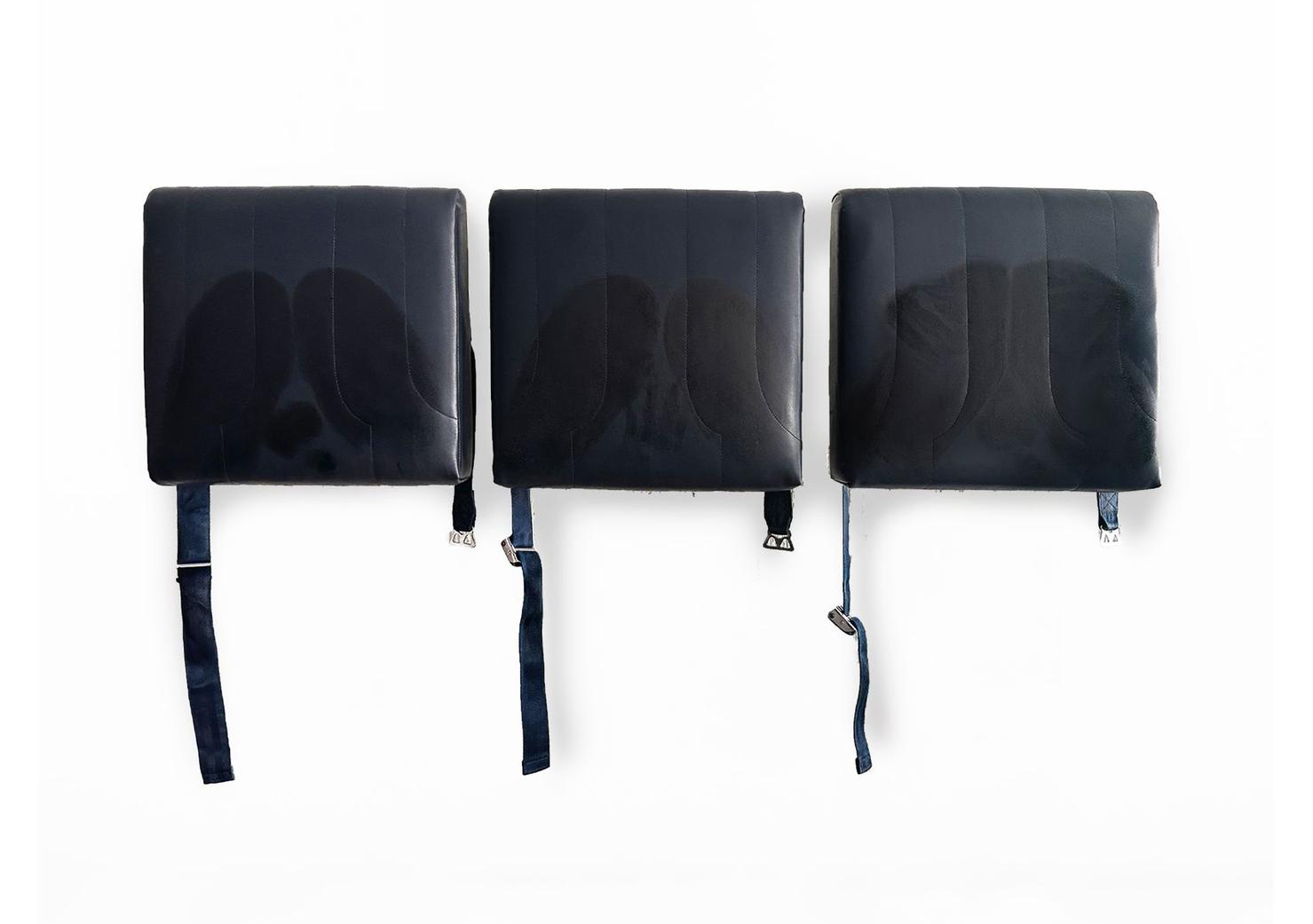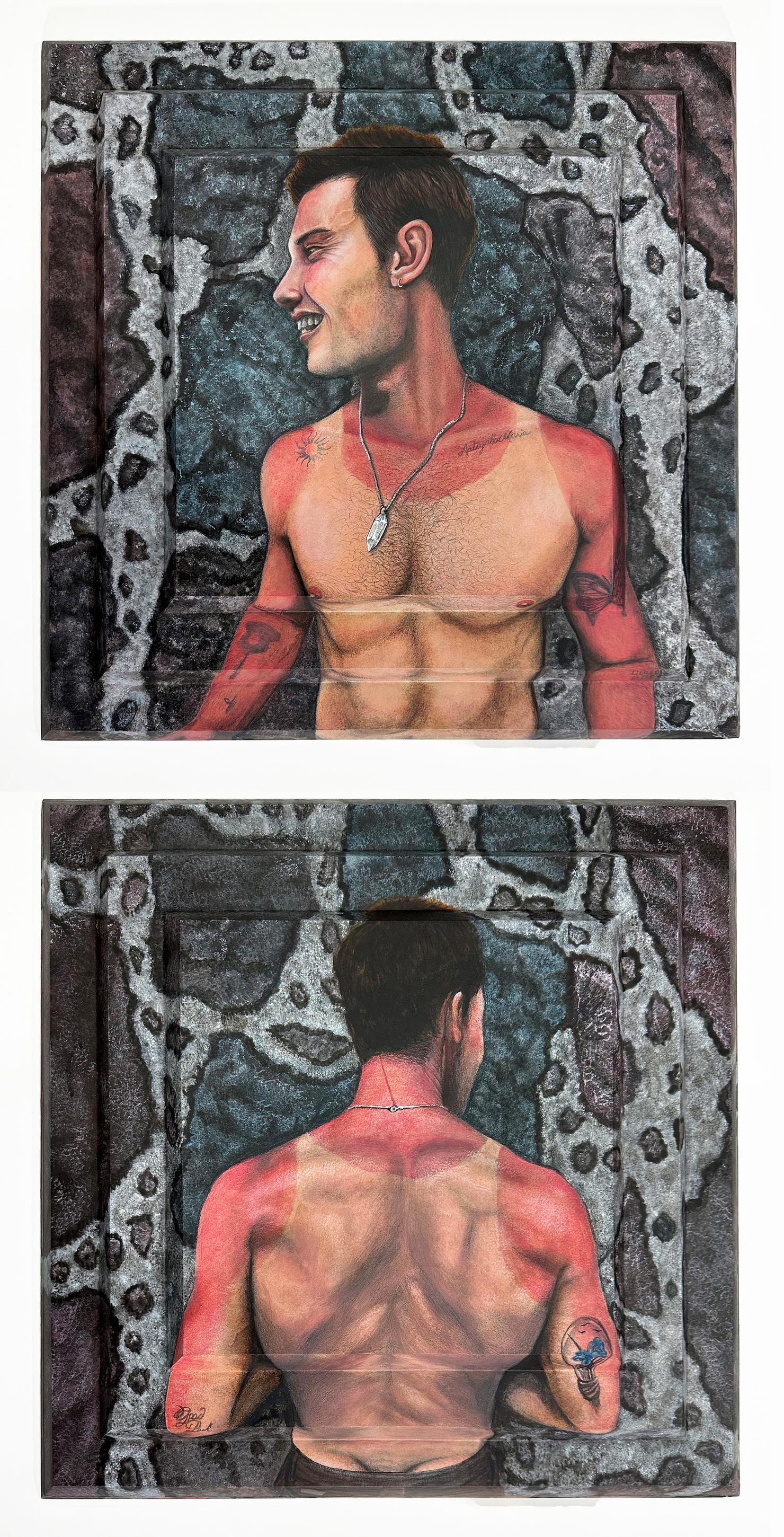Your enquiry email was sent successfully.
Your email was sent successfully.
Your enquiry email for favorites was sent successfully.

For this new edition of ZONAMACO, and following Bernardo Mosqueira‘s new theme: “gender disobedience and the imagination of radical politics”, Galerie Eric Mouchet has decided to bring together two artists who question the codes of heteronormative sexuality and patriarchal society: American artist Wells Chandler (born in 1985) and Mexican artist Romeo Gómez López (born in 1991). Aesthetically very different, both use humor and colorful cultural references to propose new politically committed queer utopias.
With tenderness and admiration, Wells Chandler returns to major works of art history and reinterprets them in a contemporary reading through the prism of intersectional struggles. He disrupts references and mixes models, simply and joyfully, but without losing sight of current issues and the struggle for greater acceptance of marginalized minorities. For ZONAMACO, we present one of his latest works, shown at his Paris exhibition, “Feminist Bird Club Presents: Luncheon On My Ass”, as an (ir)reverence to Manet’s “Déjeuner sur l’herbe”. In this gathering, no longer bored young naked women at the center of a conversation between cis-het men wearing frock coats, but a new social world populated by multi-gender frogs, flowers, hallucinogenic mushrooms and cosmic goddesses.
Romeo Gómez López is a young Mexican artist who uses elements of popular- and mass cultures, such as religion, politics and science fiction, to criticize the contemporary art scene’s conservatism. His work challenges notions of systematic cis-gender heterosexuality in the arts, using humor and a pornographic imagination to show resilient alternatives. He focuses on libidinal values and their provocative power as generators of sensitivity and triggers of reaction. For ZONAMACO, Romeo Gómez López has specially designed a new global installation, a resolutely queer work borrowing from both Mexico’s history, and societal and political issues. This installation explores the inequality that reigns in this touristic El Dorado, wide open to gringos and whitexicans to satisfy their cultural voyeurism, but where travel outside their country is restricted to natives; an uneven right to mobility, which currently deeply undermines the Mexican society.
67 3/4 x 86 inch
88 x 57 7/8 inch
31 7/8 x 79 7/8 inch
28 x 27 inch
33 7/8 x 26 inch
14 x 16 7/8 inch
36 x 31 7/8 inch
9 1/2 x 10 3/8 inch
9 1/2 x 10 3/8 inch
12 x 16 inch
The Rosetta Stone, the famous fragment of a stele of Egyptian origin that has become, among other things, the name of a language software program, and the name of a highly-touristy bakery in Mexico. In Romeo Gomez Lopez's hand, this stele becomes a volcanic stone sculpture with a translucent orange resin at its center, reproducing Panadería Rosetta's famous guava roll.
6 3/4 ⌀ 35 3/8 inch
15 3/4 x 11 3/4 x 7 7/8 inch
Did the kraken exist? There are no possible fossils because the squid’s body is soft and alkaline. That’s why this is Krakken, with a double K, referring to the Nikken filter, the petrosexoracial* society’s promise of alkaline water to neutralize the body’s acidity levels, within reach, yet another myth. The closest thing to evidence of the Kraken’s existence is a strange scene at Berlin-Ichthyosaur State Park in Nevada. Mark McMenamin, a scientist, claims that in 2011 he found the proof. A cavern with marks from the suction cups of a giant mollusk. Additionally, a group of reptile bones arranged in a way that resembles the pattern of said sucker discs. The story told by these remains is that of a giant kraken that, after having eliminated enormous swimming predator reptiles, decides to make a self-portrait with its bones: the oldest known self-portrait.
*"petro-sexo-racial" in reference to "petro-sexo-racial capitalism” (ecosystem destruction, sexual and racial violence, fossil fuel consumption and industrial carnivorism) mentioned by Paul B. Preciado, in Dysphoria mundi (Editions Grasset, 2022).
47 1/4 x 23 5/8 x 4 3/4 inch
15 3/4 x 15 3/4 x 14 1/2 inch
The name was originally given by the native Mexicans after the arrival of the Spaniards, and after an incident related to corn in Spain. Although it was not very to his liking, corn was free of the taxes imposed by the Spanish government and the Church, so it was cheaper and therefore the ideal food support for people with limited resources. However, when the Spaniards tried to process the corn, they treated it as if it were wheat, discarding the process of nixtamalization that the native Mesoamericans gave to corn. By omitting the process of nixtamalization, corn does not release niacin (or vitamin B3), which is an indispensable element for human food; and by lacking in a diet based only on corn, it resulted in a series of disorders and deficiencies that went so far as to cause the madness and death of those who suffered from the deficiency of this component. This condition cost the lives of many people in Europe. After being investigated by Dr. Gaspar Casal, in Spain this condition was called "Mal de la Rosa" (or pelagra) as seen in his work Natural and Medical History of the Principality of Asturias. In Mexico it was given the name "Vengence of Moctezuma" because the fact of ignoring the native Mesoamericans cost the lives of thousands of Europeans. Remembering the essence of this event, colloquially the name "Moctezuma's Revenge" was redefined to any gastrointestinal condition caused to a foreigner, which were mostly diarrhea.
7 5/8 x 8 7/8 x 8 5/8 inch
Acrylic painting of the Canadian singer Shawn Mendes with farmers tan after his visit to the Pyramid of the Sun in Teotihuacan, Mexico.
20 1/2 x 20 1/2 x 3 inch
A small guava roll in reference of the "Rosetta Stone" with at its center a silicone figure of Quetzalcoatl, a Toltec god known as the Morning Star, aka the goddess Venus. Part of the "Antropoxic souvenir" series, a piece that you can always bring home.
4 3/4 ⌀ 4 3/4 inch
A small guava roll in reference of the "Rosetta Stone" with at its center a silicone figure of Quetzalcoatl, a Toltec god known as the Morning Star, aka the goddess Venus. Part of the "Antropoxic souvenir" series, a piece that you can always bring home.
4 3/4 ⌀ 4 3/4 inch
Hollywood movies always put a yellow filter to portray Third World countries in order to them look ethnic. This piece combines the misconception that blockbusters movies prefer aesthetics over accuracy. Mix-matching volcanic rock from Aztec culture with Inuit snow goggles, this object foreshows how we poorly understand other cultures.
1 3/4 x 6 3/4 x 4 3/4 inch


























